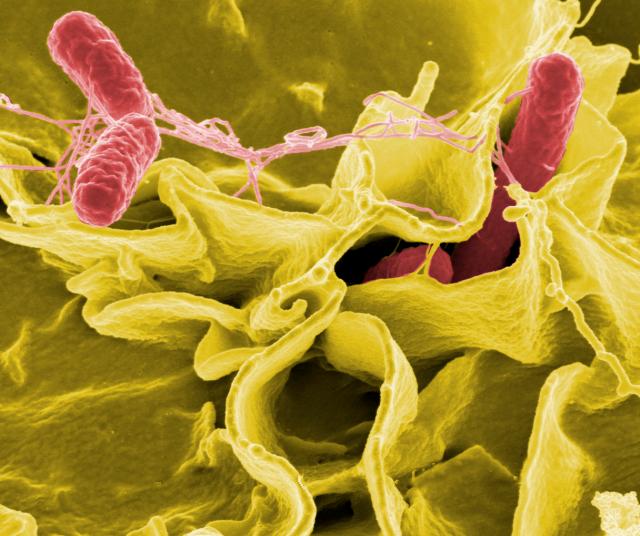
Flickr/NIAID
After we published my article about former Peanut Corporation of America CEO, Stewart Parnell, on Monday, I heard from one of his family members, who did not want to be identified by name:
“Mr. Clinton,” she wrote. “I just read your article concerning Peanut Corporation of America. I am indeed very sorry you proceeded to write your column without searching into some of the truth.”
She is unsurprisingly angry about Parnell’s sentence and the process by which he was convicted. She objected to one point in particular in my article—my mentioning that nine people had died in the salmonella outbreak tied to Peanut Corporation of America:
“Are you aware that these people you say died from salmonella 80 percent of them did not even have any type of salmonella? Obviously you were not!! I have the death certificates.
I realize everyone that publishes anything likes to have an interesting story however, what you have written is very far from being true. What you did was copy what someone else wrote.
Sir I am more than happy to help you with a true story.”
She did send along the death certificates. One listed sepsis and metastatic lung cancer as cause of death. Another cited myocardial infarction and metabolic acidosis. The third said the cause of death was respiratory failure and lung cancer.
So let’s clarify: I was mistaken to say that nine people died because of the salmonella outbreak. The exact number is not known and probably will never be known. The nine people were people who died during the outbreak, who tested positive for the specific strain of salmonella linked to PCA. The death certificates were filled out shortly after death, but the Center for Disease Control’s (CDC) analysis doesn’t produce results until weeks after samples are submitted. Does the death certificate that lists myocardial infarction prove that the death wasn’t caused by salmonella? Not exactly. Major infections can trigger heart attacks; the death may or may not have been caused by salmonella.
CDC typically uses the language “as many as X people may have died as a result . . .” I should have done the same. (Actually, even CDC’s language has problems. There are always people sickened by food-borne outbreak who don’t get counted because nobody made the connection. There could conceivably have been more than nine deaths, though I’d bet on fewer.)
Six deaths is not much more bearable than nine, so on one level, the family member’s point doesn’t change the thrust of the article very much. But it does raise two interesting issues:
1) Because Parnell was not tried for the deaths his company allegedly caused, the jury never got to consider the evidence of those deaths. In theory, the deaths weren’t supposed to be considered at all in court. In practice, out in the wider world, they make a difference, and it hurts the public conversation that the evidence hasn’t been through the trial process.
2) So does this mean that we should be trying food executives based on the deaths they caused? There’s one thing wrong with that: The fatalities caused by an outbreak are largely a matter of chance. Some strains of salmonella do little damage. Others do lots. It doesn’t seem fair to make mere chance part of the sentencing process.
All of this means that I now seem like I’m talking out of both sides of my mouth—saying on the one hand, don’t consider the mortality rate in sentencing, but on the other, feel free to consider it when you’re working out how you feel about the overall justice of the proceedings. It’s true. I really do seem to be saying both those things, and I don’t feel inclined to retract either of them.
What can I say? This stuff isn’t supposed to be easy.








